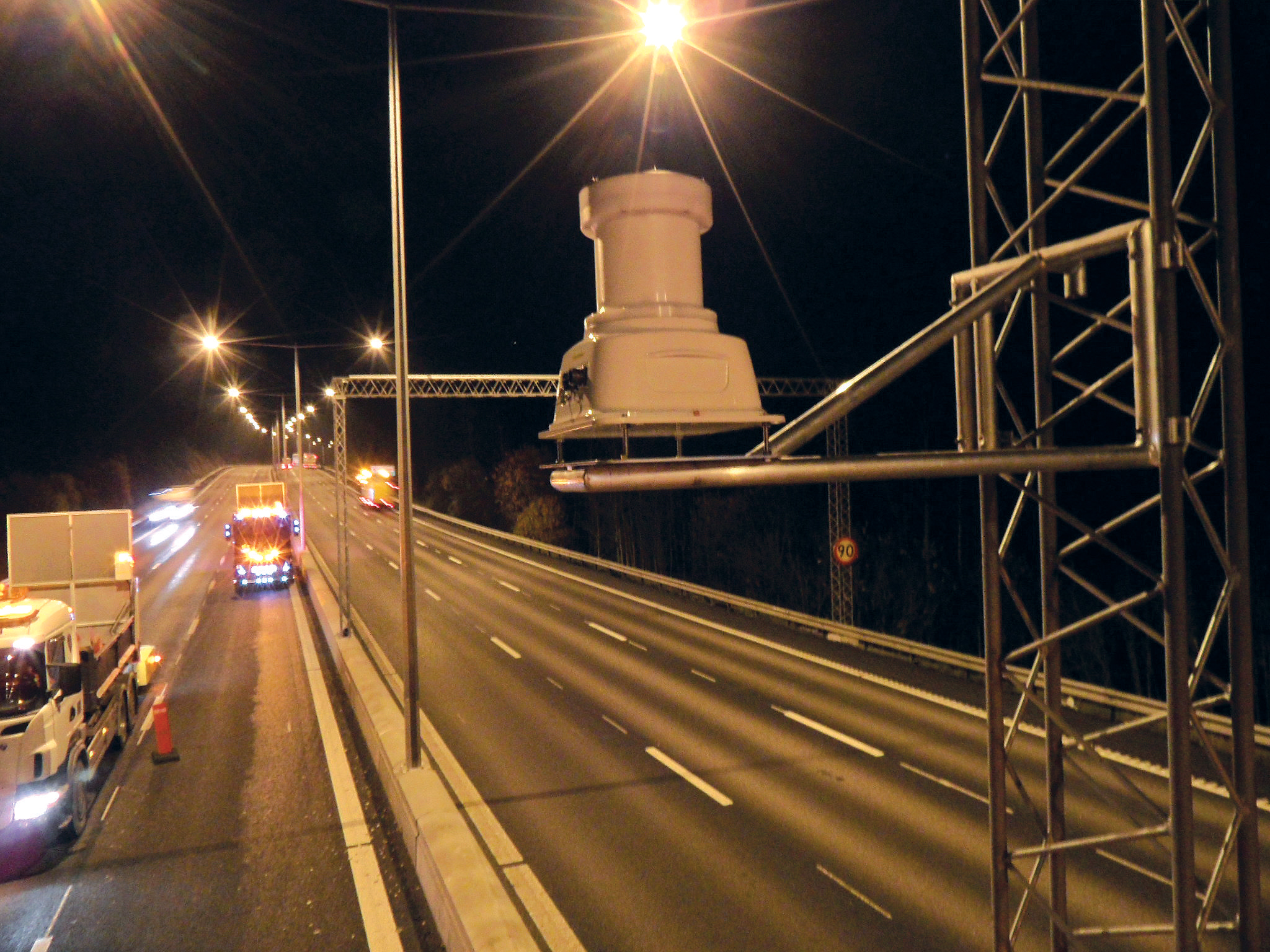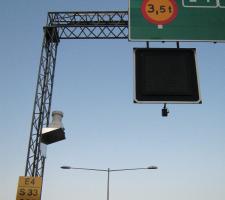
Applications of long range radar technology are demonstrating its effectiveness as a first line of defence for highway managers – adding greater resilience and capability to existing systems
Development efforts are bringing long range millimetric wave radar to the fore as a very useful tool for managers of highway networks. Application of radar for wide area monitoring in traffic management remains in its infancy. But recent projects are demonstrating how it can now serve to enhance detection of incidents by complementing existing technologies.The inference is radar can give an additional layer of resilience and reliability, or fill in the gaps left by other more established types of monitoring systems. Certainly, in certain situations or conditions, long range radar can do what video or CCTV cannot, due to radar’s capability to monitor in 3600 and detect incidents immediately and automatically, regardless of light levels and weather conditions.
In Southern England, the Hindhead Tunnel on the A3 trunk road south of London was opened to traffic during 2011, with the first application worldwide of radar as a key part of an incident detection system. Now Sweden’s Trafikverket national transport administration is rolling out similar technology on a 16km stretch of road near Stockholm (see sidebar).
In both cases the radar technology has been supplied by
“The radar is not supplanting video, but supplementing it to improve detection. The radar is integrated with the camera system,” says Navtech Radar director and co-founder Stephen Clark. “People will still want and need to view images, so radar is not a direct replacement for video, but for above ground applications, it is less susceptible than vision-based systems to precipitation, such as fog, rain and snow, or to dust. It is not affected by changing light levels, which can be a problem for camera systems at tunnel portals, or by dirt on the scanner. This leads to lower false alarm rates overall.”
According to Clark, Navtech’s client for the Hindhead Tunnel, England’s
“Hindhead was a watershed. It’s the first use of ClearWay to have gone through the trial and study phase to installation and commissioning,” Clark says. Operational feedback has been positive, leading to specification of similar in Sweden. The Highways Agency is currently reviewing Type Approval of ClearWay, effectively an official endorsement of the concept and the system, which Clark is hopeful of receiving “imminently”.
Use of radar has been helped by a reduction of costs resulting from development efforts. According to Clark, the cost of installing a combined radar and camera installation is now broadly comparable to an all video system, but with radar, performance in all weathers is now allied to very low maintenance needs.“Our systems have a mean time between failure rate of 75,000 hours – that’s eight to nine years of operation. Unlike video, radar can be installed and just left to get on with it. There are none of the cleaning issues associated with a camera. That’s especially important in tunnel environments where access for maintenance can be an issue,” Clark says.
At Hindhead and in Stockholm, ClearWay radar is being used as a first line of defence; driving pan-tilt-zoom (PTZ) cameras or providing manual prompts for operators with greater resilience against false or missed detection. Prevailing weather conditions in Sweden often make identification using video virtually impossible. Also, many of the strategic roads there operate without a hard shoulder, making rapid identification of an incident essential.
Clark says: “In high speed, low flow conditions, stationary vehicles can present a significant hazard – especially in inclement weather or poor visibility. Radar can be used to trigger variable message signs to provide hazard warning and speed advisories much further upstream. At Hindhead, the radar systems automatically change the tunnel’s speed signs. That would not be operationally viable if they generated high false alarm rates.”
While application of millimetric wave scanning radar is primarily in incident detection, it promises capability in an increasing range of circumstances. Clark lists detection of slow and stopped vehicles, ‘ghost’ (wrong way) drivers, pedestrians and debris or lost cargo as ready capabilities, but the technology can also be used for other tasks.
Stockholm implements all weather detection
Need for reliable detection performance in all weather has driven selection of radar technology for application on strategic roads around Stockholm, says project leader Kjell Sohlberg of Trafikverket, the
“We have a lot of multi lane roads which do not have a hard shoulder, so fast and accurate detection is a must,” Sohlberg explains. “The problem in the Nordic countries is that inclement weather – rain, fog and snow – is common. That precludes the use of video, or else makes it very expensive because of the high number of closely spaced cameras which would be necessary.”
There simply are not other technologies which would be effective for this kind of application, he says: “Radar gives us very low numbers of false positives, as has been proven on trials, and also allows us an area-wide detection capability. Shorter range radar systems are becoming available but they would represent a false economy in this kind of application; we would be back to the situation with cameras of having to install more poles, more power and generally more infrastructure.”Software enhancements to the basic technology can allow detection of tailgating and illegal lane changes, which the company is currently piloting with some success. A next step will be to add vehicle classification and count functions. These are not capabilities exclusive to radar systems, but they demonstrate a continuing development process which is looking to derive greater utility and added value from a single installed radar system. Greater range capabilities are leading to interest in monitoring, to a good degree of detail, of what’s going on at complex road intersections.
“We’re talking about being able to provide incident prediction at greater distances,” Clark continues. “Where a vehicle is rapidly approaching a line of queuing traffic or where an incident has already occurred, there is opportunity to take mitigating action from farther out. Greater range of detection is needed for that, with tracking capabilities which work irrespective of prevailing weather and levels of light – in fact, it’s often in more hazardous conditions that effective detection is needed most.”
If the Hindhead and Stockholm deployments are demonstrating that radar works, they are also showing that perceived difficulties with radar are unfounded.
“Certainly in the wide area, above ground setting there’s nothing that can match what radar does,” Clark says. “Especially in locations where inclement weather is common, cameras do not provide continual monitoring and if hard shoulder running is going to become more common there’s a big future role for radar.
“One of the misconceptions is that you’re somehow adding ‘more’ technology by supplementing cameras with radar. You’re not; the moment you zoom in on something with a PTZ camera, you lose wide area observation. So you’re going to need PTZ cameras and fixed cameras – or PTZs and radar. There’s no extra layer of technology.
“I also think that clients should be less prescriptive on the type of technology they want. In the past, they’ve been very used to saying that they need a given set of data but advances in different technologies mean that quite often that same information can be gathered via alternative means. Increasingly, clients and traffic managers need to think in terms what it is they’re trying to achieve, instead of remaining too concerned with how it’s done.”












